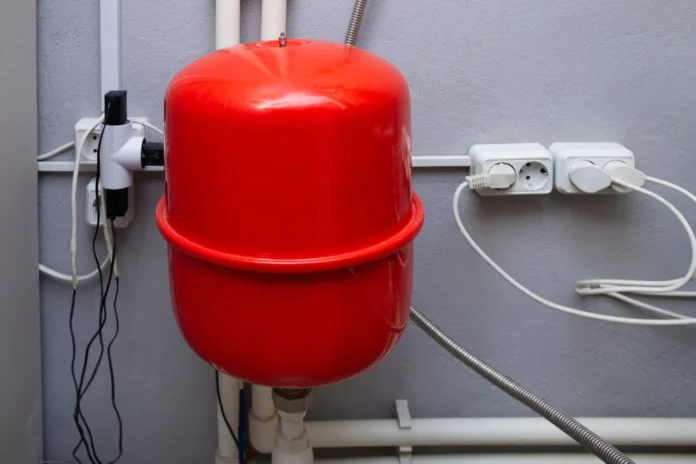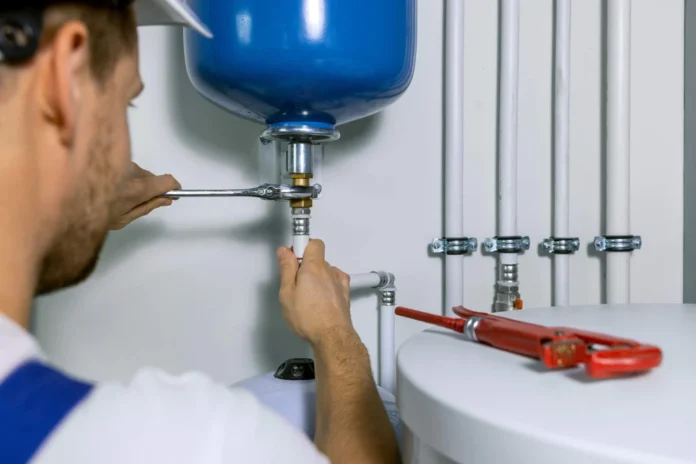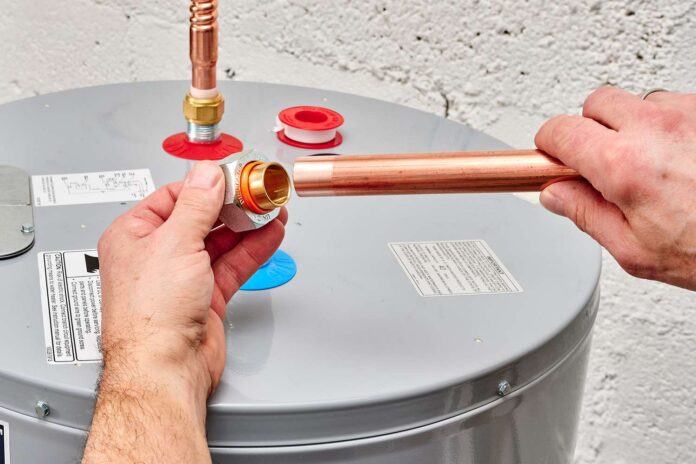Stepping into the vast world of home improvement can seem daunting, particularly when it comes to intricate tasks like installing an expansion tank on your hot water heater. Yet, the reality is that even seemingly complex jobs can be broken down into manageable steps.
So, if you’re seeking to enhance the efficiency and longevity of your hot water system while ensuring the safety of your household, you’ve landed at the right place. This guide will navigate you through the process of installing an expansion tank, transforming this intricate task into a clear, step-by-step journey.
Ready to put on your DIY hat and dive in? Let’s begin this venture into the heart of your home’s hot water system.
An expansion tank for your water heater helps prevent pressure build-up in your plumbing system and is an integral safety measure in any home.
If you need to install an expansion tank on your water heater, be sure to continue reading before getting started.
If you don’t feel comfortable installing an expansion tank by yourself (which is perfectly fine!), then you should contact a reliable plumbing company that offers professional plumbing services in Centreville.
Decide on the Size

An expansion tank for your water heater helps prevent excessive pressure from building in your plumbing system, protecting both it and other appliances from potential damage.
Excessive pressure can damage tanks and pipes as it puts extra strain on them to do their job – potentially cracking them or even breaking them apart altogether.
The first step to choosing an expansion tank: determine its appropriate size. There is an online calculator that can assist with this endeavor.
Once you know which expansion tank size you require, installation can commence. Begin by switching off the water supply line leading to your water heater before opening a hot water faucet to relieve any excess pressure.
Choose the Materials
If you’re installing a bladder-type expansion tank, the right materials must be chosen. Bladder tanks use flexible diaphragms that retain air in the tank while simultaneously absorbing increased fluid pressure – this makes them more cost-effective than compression tanks but may need periodic replacement.
Once you’ve chosen the ideal tank and chosen its location, it’s time to begin the installation process. First and foremost, ensure that the water supply to the hot water heater has been turned off before switching off any power if applicable (in particular if it’s electric).
Install a copper tee-fitting at the water heater’s dielectric union port. Wrap loops of pipe tape around its threads before threading an adapter onto them using a pipe wrench for extra security.
Connect the tee-fitting’s top outlet to your cold-water supply line using copper flex lines or rigid pipes. Make sure to connect any additional cold-water lines as necessary before turning on the water heater again.
Prepare the Tools

Those considering installing an expansion tank on their hot water heater should have all the appropriate tools. Expansion tanks are relatively cost-effective solutions for protecting home systems against thermal expansion, high pressure, or other damages; their installation process is relatively straightforward without needing professional assistance.
Begin by switching off the power to your heater, which can be achieved either by switching off its circuit breaker or, in the case of gas heaters, by shutting off their gas supply.
Once you’ve located the line that supplies cold water to your heater, locate a tee fitting on it and connect a short length of horizontal copper pipe using sweat soldering or push-fit connection techniques to its side outlet on the tee fitting.
Finally, place the expansion tank a few inches above the cold water supply line and secure its threaded adapter using Teflon tape or liquid pipe joint compound (liquid). When tightening, do not overdo it or you risk damaging pipes or fittings.
Maintenance: The Life Extender
Maintenance plays the pivotal role of the guardian, protecting your hot water heater and expansion tank from untimely wear and tear. Like the proverbial apple a day, regular inspections help keep plumbing problems at bay.
Inspect your expansion tank periodically, keeping a watchful eye for corrosion, leaks, or damages. Bladder-type expansion tanks need special attention as the bladder itself could require replacement over time to maintain its pressure-managing role.
Also, don’t forget to look after your water heater. Annual tank flushes can banish sediment and mineral buildup, culprits known for sowing the seeds of inefficiency and pressure instability. Additionally, keep a check on the pressure relief valve, your system’s safety warrior, ready to release excess pressure in dire situations.
Professional Installation: The Expert Touch

No matter how straightforward installing an expansion tank may appear, understanding the limits of your abilities is crucial. Think of professional assistance as your safety net, catching potential water leaks, pressure imbalances, and plumbing damage before they fall into the pit of expensive repairs.
A seasoned plumber, with their well-honed skills and expertise, can ensure the proper and safe installation of the expansion tank. They play the role of a trusted guide, helping determine the correct tank size for your specific water heater and plumbing system.
Besides, they’re fluent in the language of local building codes and regulations, ensuring your installation aligns with legal and safety parameters. When you hire a professional, you’re not just investing in an installation, you’re buying peace of mind and a ticket to a seamless integration of the expansion tank into your plumbing system.
Regular System Checks: The Early Warning System
Once the expansion tank installation is complete, shifting into proactive gear can help you spot potential issues early. Regular system checks act as your plumbing radar, scanning for pressure-related problems and addressing them before they escalate.
Look out for the ‘water hammer,’ an ominous sign of sudden pressure fluctuations in your plumbing system. The pressure relief valve, your system’s pressure gatekeeper, also deserves regular attention to prevent hazardous pressure build-up. If the valve shows signs of leaking or malfunctioning, prioritize immediate replacement to ensure the safety of your hot water system.
In essence, the triad of diligent maintenance, professional installation, and regular system checks is the elixir of longevity and efficiency for your hot water heater and expansion tank. Embrace these practices, and you’ll be rewarded with a reliable, smoothly functioning hot water system for the foreseeable future.


![Calgary’s Hottest Neighborhoods for Luxury Homebuyers [2024]](https://thewashingtonote.com/wp-content/uploads/2024/04/Calgary-218x150.png)


![Calgary’s Hottest Neighborhoods for Luxury Homebuyers [2024]](https://thewashingtonote.com/wp-content/uploads/2024/04/Calgary-324x160.png)



